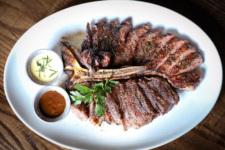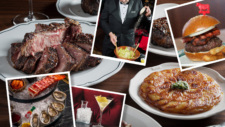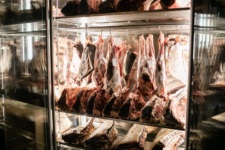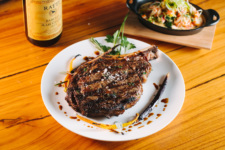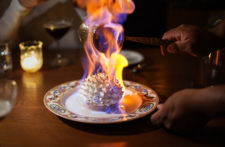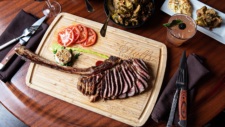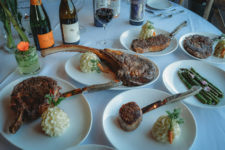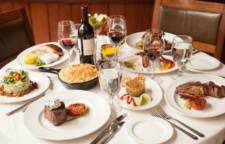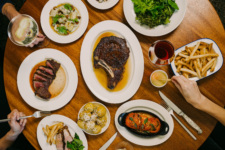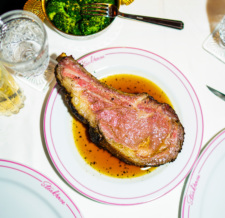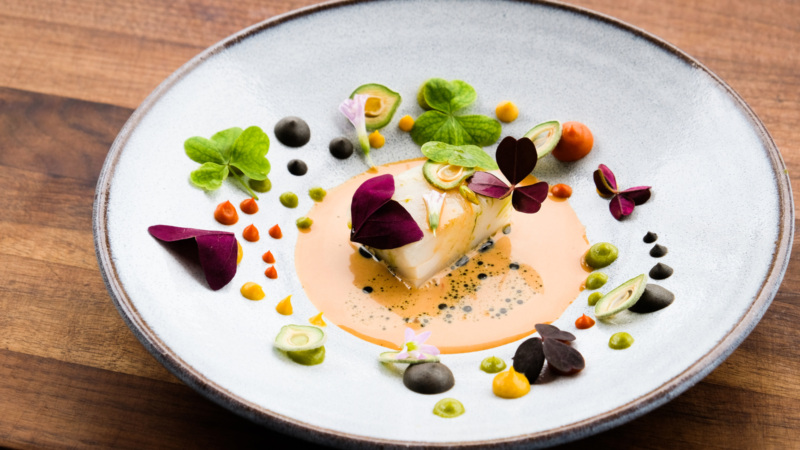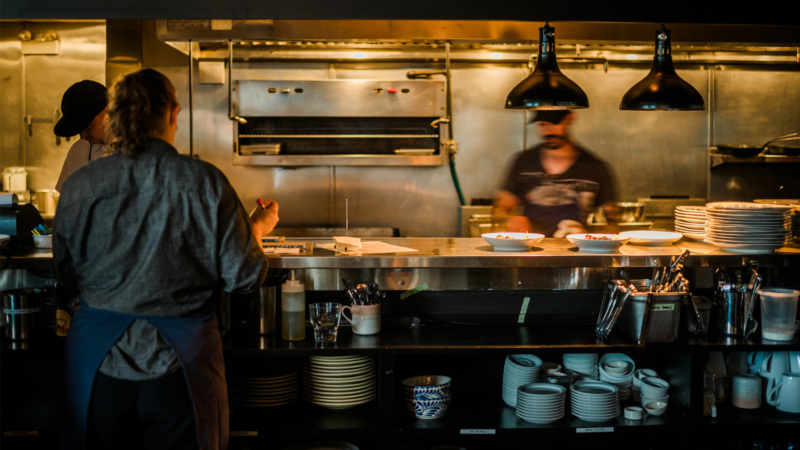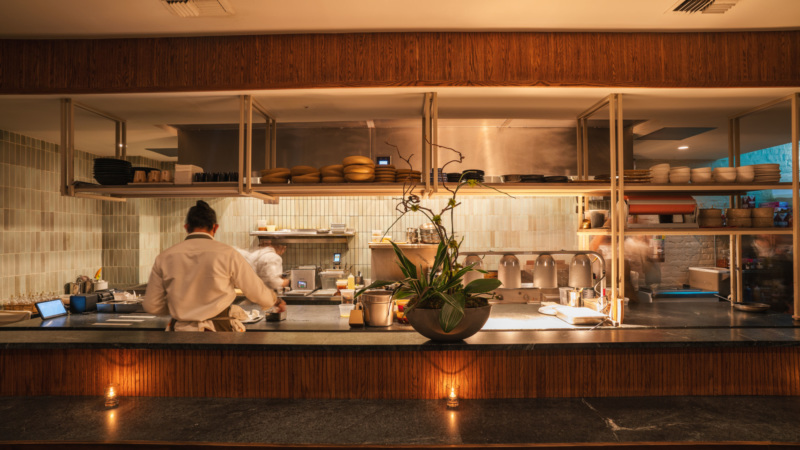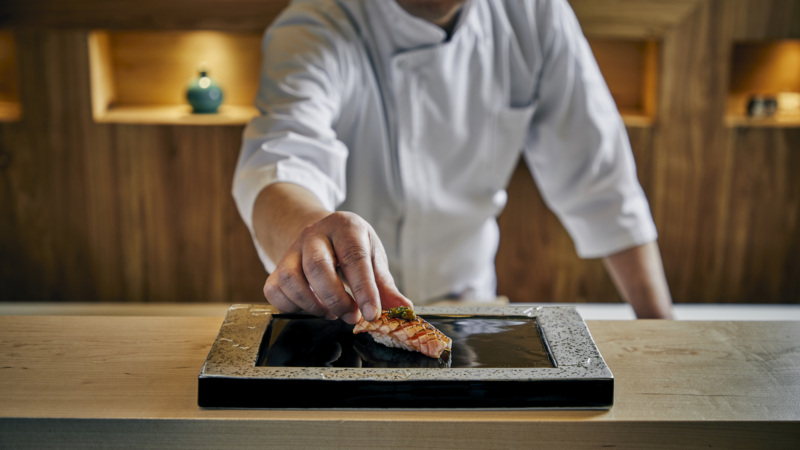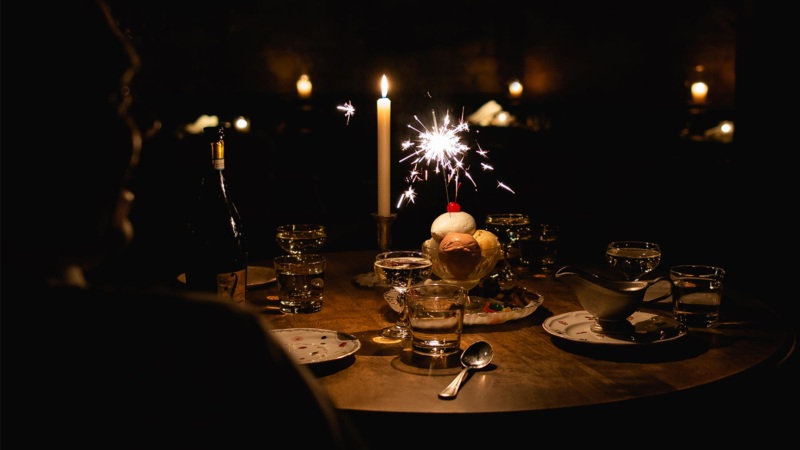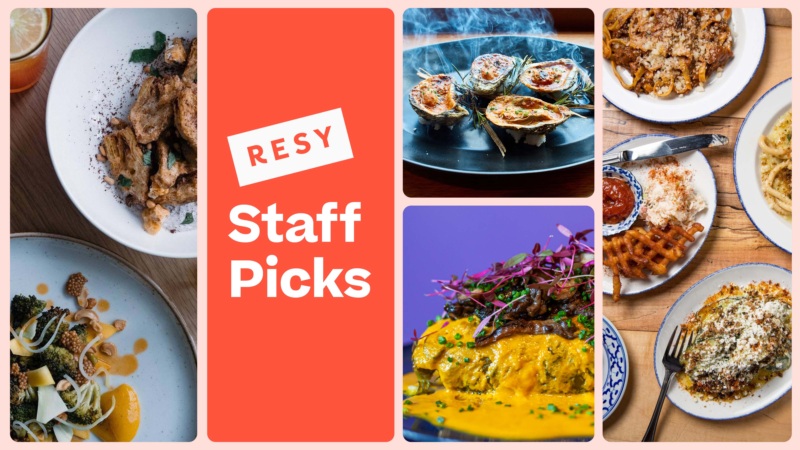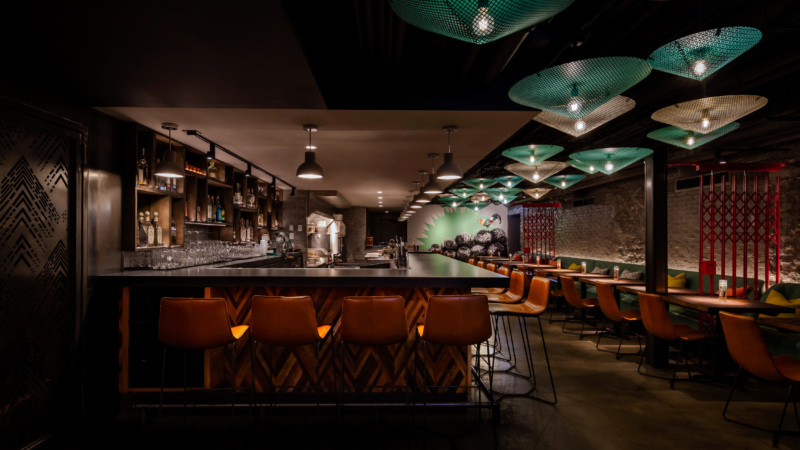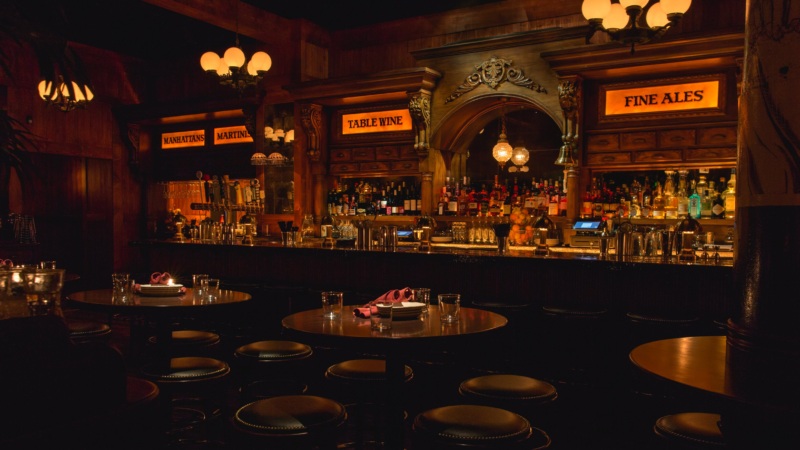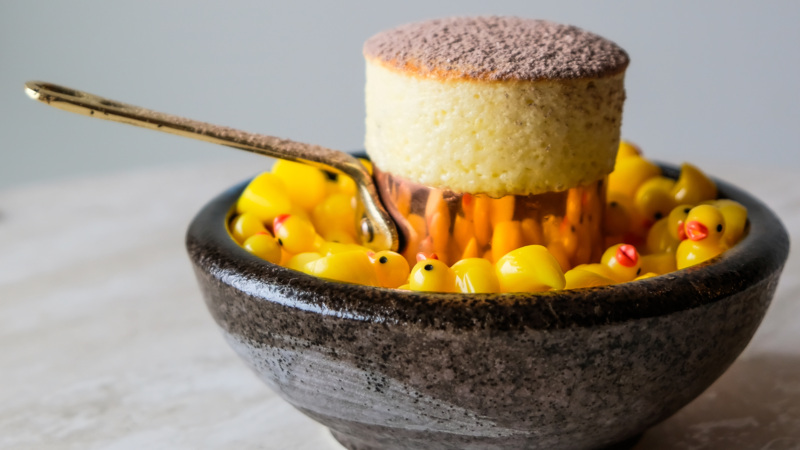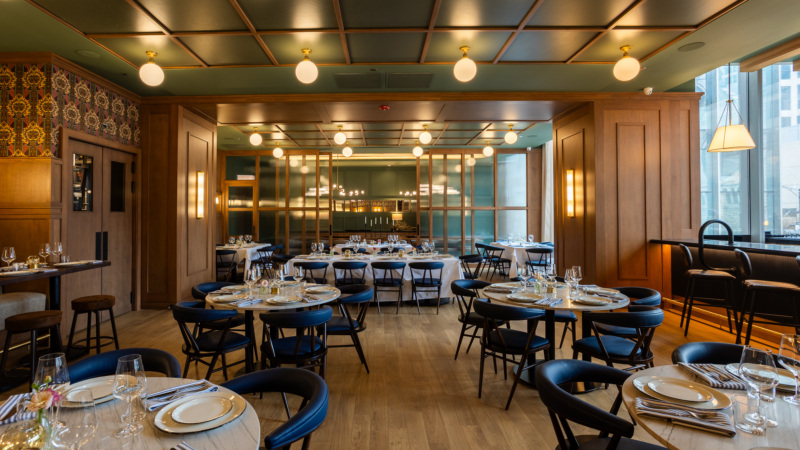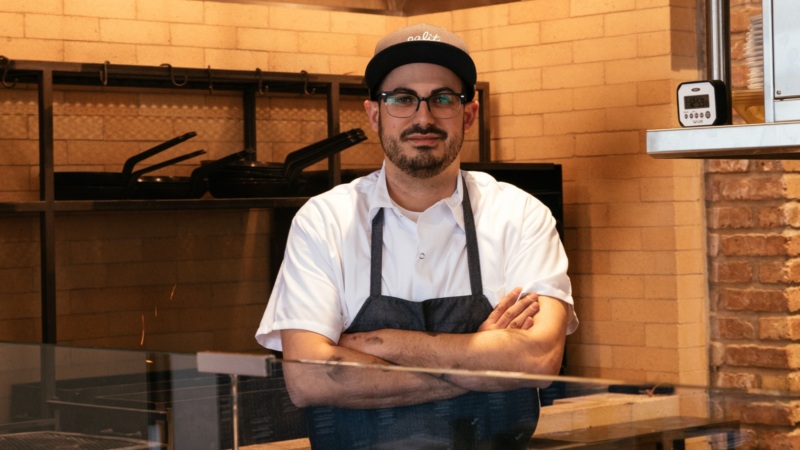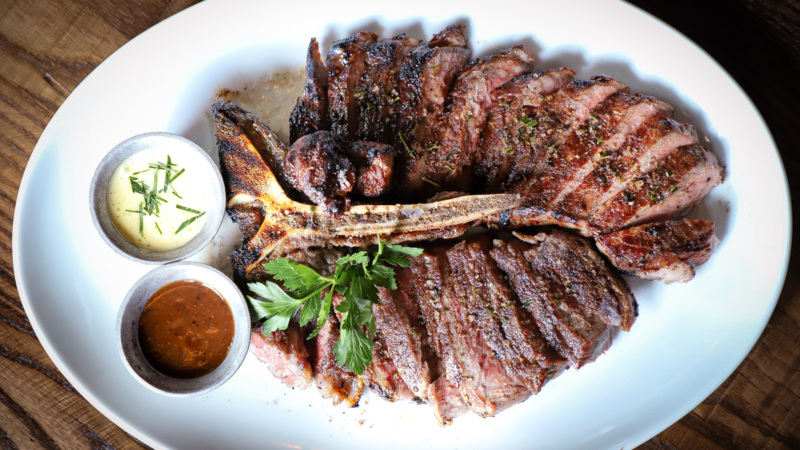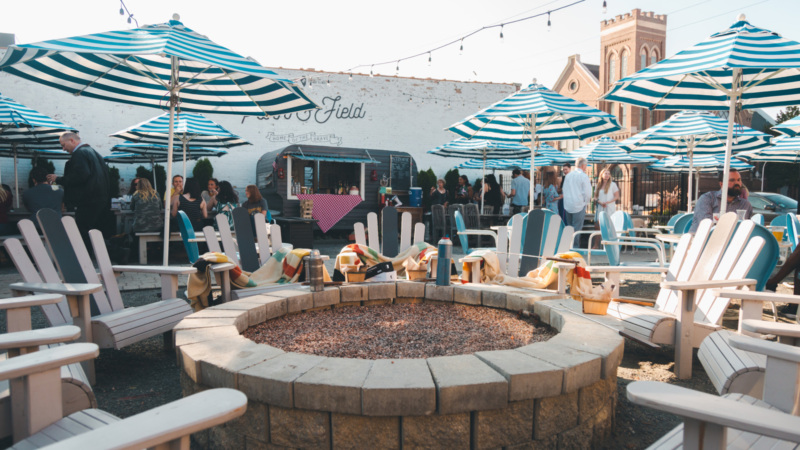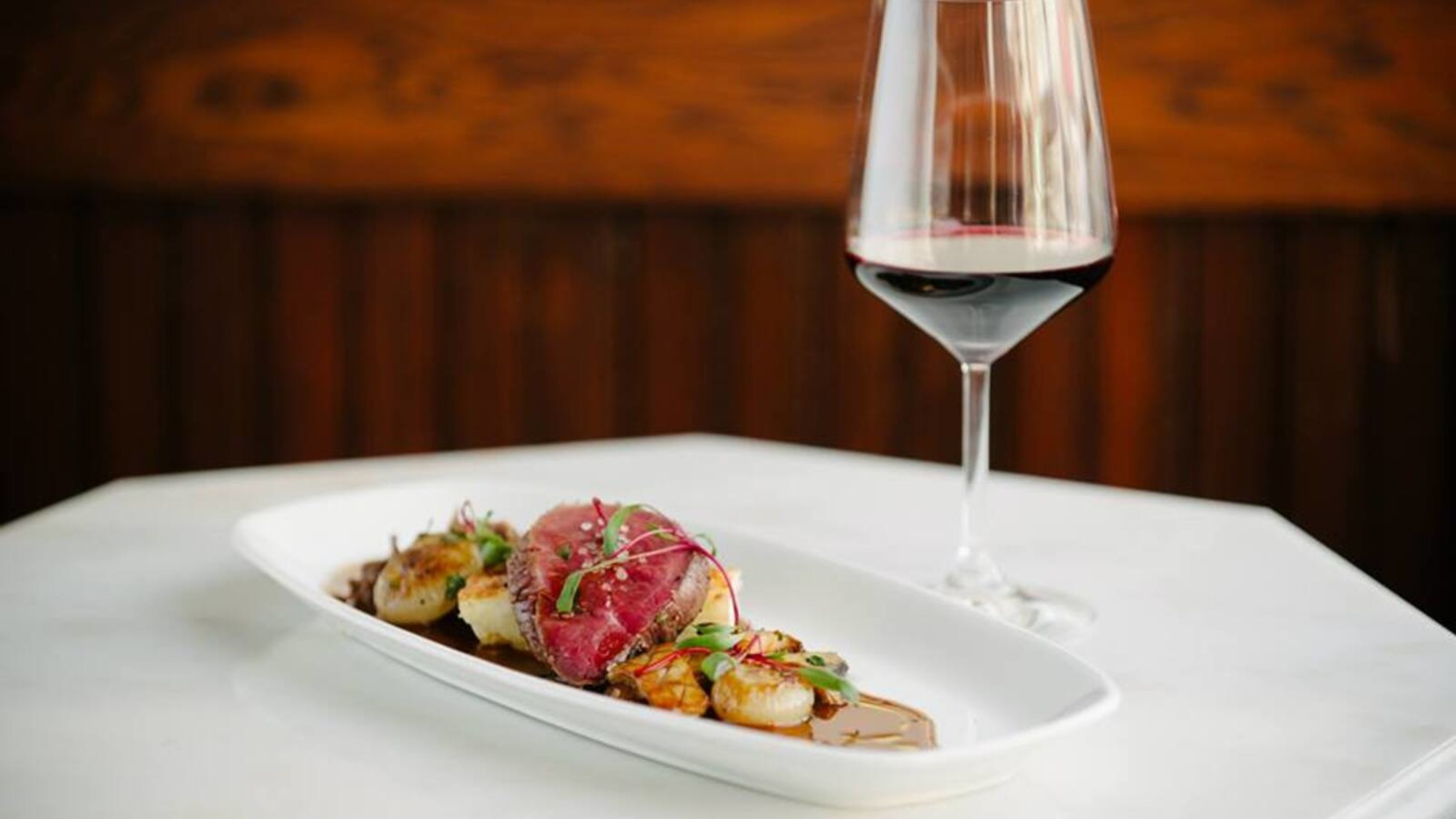
How Boeufhaus Brings the Steakhouse Wine List Into the Modern Era
One Great List is Resy’s occasional tribute to particularly noteworthy or unique wine programs around the country.
In a city with plenty of opinions about what makes a steakhouse a steakhouse — big names, big rooms, and big wine lists full of big bottles to accompany big meat — Boeufhaus takes a more diminutive tack. Since 2015 Jamie Finnegan and Brian Ahern have run their Franco-German steakhouse in the narrow footprint of a former Polish butcher shop, with circa-1900 subway tiles and a meat locker hidden under years of other owners.
For sure there’s plenty of beef here — from tartare to steak frites to a 55-day aged ribeye — but when it comes to the two-page wine list, it’s missing the usual roll call of plump chardonnays and gratuitous magnums of overwrought Napa cabs. Instead, Finnegan, the restaurant’s wine director, offers an ever-evolving line up of rieslings and chenins, light-on-their-feet reds from the Jura and Ardeche, bolder bottles from Umbria and the south of France. It’s the steakhouse wine list no one knew they needed.
Boeufhaus sits in the part of town where Humboldt Park becomes Ukrainian Village, one that has arguably become the city’s nexus of natural wine over the last dozen years, with Rootstock (opened by former employees of the city’s original natural wine bar, Webster’s) as the anchor and All Together Now and Kasama recently joining the fray. Boeufhaus was the first restaurant in the area to champion these wines.
Having run kitchens from Miami, to Washington, DC and Chicago, Boeufhaus was Finnegan’s first step into the front of the house, and he brought on his friend Nathan Adams to serve as beverage director. Adams, who opened the city’s (and honestly, one of the country’s) first natural wine shop, Red & White, just up Western Avenue in Bucktown in 2008, devised the inaugural list for the restaurant. After three years, Adams moved on when he opened his own restaurant, Noisette, and Finnegan stepped fully into the role of wine buyer.
Adams’s philosophy of revolving the wine list around what was coming out of the kitchen remains. “Nathan instilled in me the idea that weight and texture of a wine can play just as big a role in pairing, as the sense of place and the cuisine around where it was produced,” says Finnegan.
Considering the roots of the restaurant, the list accordingly weighs heavy in France, Germany and Austria.
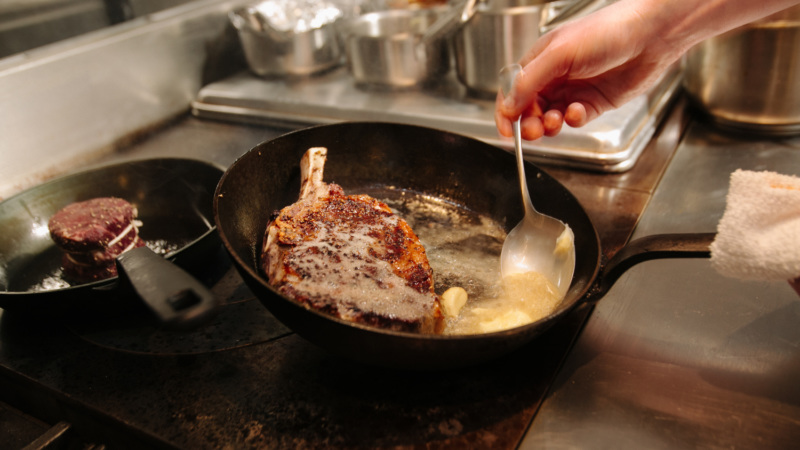
Five Ways to Understand the Steakhouse of Today
Among the perennial restaurant trends greeted by the ritual spilling of ink by legions of food writers, the return of…
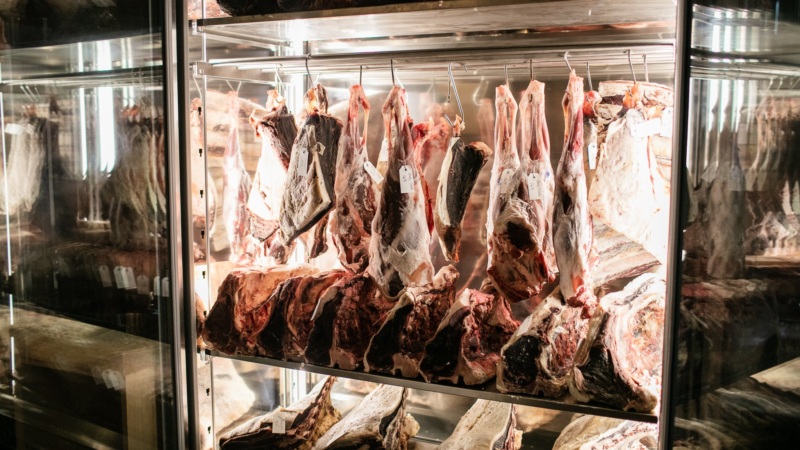
The Perfect Steak? This Chef and Butcher Has Some Answers
Plenty of chefs aim to impress with farm-to-table talk, but few are as dedicated as Sarah Welch, chef and partner…
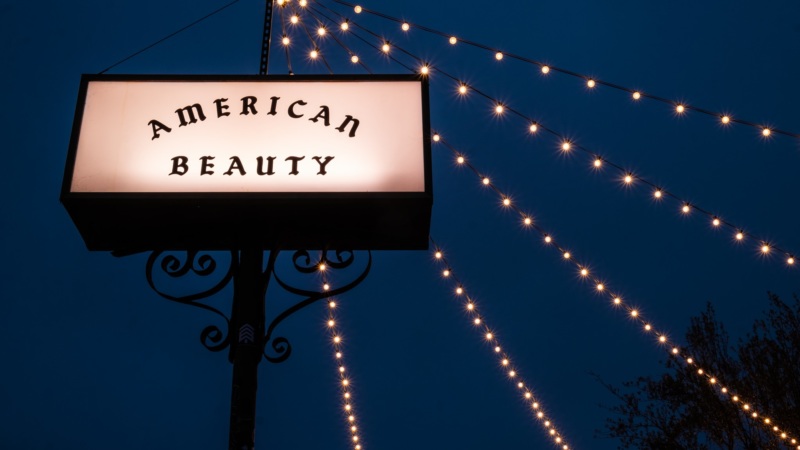
How American Beauty Redefined the Steakhouse, L.A.-Style
It’s a breezy Saturday night in Venice, and the patio at American Beauty is packed. Diners crowd into the outdoor…
By the glass options are many and necessarily varied for a menu that start very light, with shrimp cocktail and fried perch and end with a porterhouse, says Finnegan. The pours are as refreshingly a-typical as the rest of the list, currently spanning an organically-farmed traditional-method sparkling wine from Domaine Migot in France’s oft-unexplored Lorraine, a back-vintage 2015 Muscadet from Haut du Bourg and a wonderfully un-gloopy Malbec from Cahors up-and-comer Fabien Jouves.
“I have to be really diverse with white wines because we’ll be running fresh French charcuterie and cured meats on the menu at same time as hiramasa crudo.” While Austrian grüner veltliner and riesling of all sorts are personal favorites and often dot the list, but of late, Finnegan’s been digging further into weightier more substantial white blends from the south of France, taking him to wines like Bruno Duchêne’s La Luna Blanc from the Roussillon and Mas Jullien Blanc from the Languedoc. The list is organized by wine weight, which puts lighter Muscadets at the start of the white section, capped by a Saint-Peray from the Marsannay grape Auguste Clape, which 2016 Chateau de Beru Chablis and several chardonnays from the Jura in between.
Among its offerings, Boeufhaus has an ever-evolving line up of rieslings and chenins, light-on-their-feet reds from the Jura and Ardeche. It’s the steakhouse wine list no one knew they needed.
Throughout, the majority of wines fall between $68 and $85, which Finnegan says is the sweet spot for his guests. It makes it so that for groups of 4, a bottle of white to start and a bottle of red with bigger entrees isn’t out of the question.
Ahern’s menu makes room for lighter dishes, and there’s always options as lamb or duck on offer— and in truth, even the beef comes with more nuance, thanks to a serious aging program. But this is undeniably a steak place, with the emphasis is on red meat. When it comes to choosing accompanying wines, “It’s more about age to me than the cut,” says Finnegan. “If someone’s getting steak frites and our strip, the lighter reds can work. Cuts that have more beefy, prime flavor without the funk, lends themselves to slightly heavier wines like cabernet franc, but when you get into the dry age and the funk, some of the bigger reds work a little better – specifically with ribeye and t-bone,” he says.
The depth of lighter red wines expands from the Loire’s pineau d’aunis and grolleau (including a magnum of Marie Thibault’s Le Grolleau) to Beaujolais’s gamay and the Jura’s poulsard and trousseau. Finnegan’s list speaks to his belief that these are more than able-bodied when it comes to beef. “It depends on what sort of age they have on them,” he says. “Often, the vintages I have are not current; I hold them a little so they’re not as tight and more conducive to the umami and blue cheese-y flavors of aged meat.”
Four Benchmark Bottles at Boeufhaus
Domaine Migot Méthode Traditionnelle Rosé ($16 glass /$68 bottle)
“There’s a pretty high percentage of guests who start with white, rosé or sparkling by the glass and then go to bottle. We’ve always worked with grower Champagne [including Laherte Frères Rosé de Meunier Extra Brut and Bereche was long poured by the glass]. We have moved away from pét-nats because the price has gotten so high. Ands I’ve shifted gears toe work with sparkling wines from other regions.” This bottle from France’s eastern Lorraine is an ideal example.
2017 Sylvain Pataille Clos du Roy ($125)
“I love his wine,” says Finnegan. “He’s been to the restaurant. His bottles are representative of the sort of well-made, responsibly-made wines we’re looking for. This has beautiful structure and works really well with our food—it’s a good pairing for the majority of our menu.”
2020 Chateau Le Puy Duc des Nauves ($18 glass/$70 bottle) and 2018 Chateau Le Puy ($125)
“The Le Puy wines thread the needle between our ethos of low intervention vinification and responsible farming and appealing to the broad audience we serve at Boeufhaus. Most importantly, the wines pair perfectly with the dry aged beef our restaurant is known for, We currently run its Duc Des Nauves as our Bordeaux by the glass, as well its estate selection Chateau le Puy.”
2019 Alain Graillot Crozes Hermitage ($92)
“I always try to work with his wines. I found that there’s a good mix in the region of newer younger lighter interpretations and then Alain graillot, who is the classic.” Graillot’s son, Maxime, represents the new guard with his Domaine Equis, which has also been known to make an appearance at Boeufhaus.
Finnegan’s thrill is in looking beyond the “natty cool-kid scope,” digging into importer books to find underrepresented producers, which has landed him older vintages and a chance to push forward names like Benoit Badoz, Les Matheny and Peggy and Jean-Pascal Buronfosse from the Jura. His by-request cellar list gets to the region’s more culty names, Ganevat included.
In addition to the whites, Southern French reds, specifically those from the Languedoc have become objects of affection for Finnegan. “The deeper I dive into the region the more selections are making their way onto list. “Domaine Leon Barral’s Faugères, made of 50% Carignan, 30% Grenache, 20% Cinsault, is a raw wine but well-balanced wine that brings dark fruit and spice. I like to recommend it with duck or lamb.” Lately, he’s had a field blend from Mas des Chimères called Nuit Grave on the by the glass list, finding it to be versatile with items throughout the menu. Even in the southern Rhône, he’s been finding lighter expressions, from producers like Maxime Magnon, that play well with Ahern’s food.
While the list definitely skews European, pinot noir from Brooks in the Willamette Valley has been a staple (it’s poured by the glass), and in fact pinot noir from Oregon has a serious foothold, with one from Tzum in the increasingly exciting Hood River and another from JC Somers in Dundee. And for a long time, Finnegan nearly abstained from California cabernets at Boeufhaus, but he’s found a way forward there, too with producers like Les Lunes in Napa, Inconnu in Sonoma’s Russian River Valley, and Tyler down in Santa Ynez. It was a matter of locating wines that aligned with the style of the list and the food at the restaurant— as well as answering the demands of his guests who were accustomed to chooseing from a book of cabs to go with their dry-aged beef.
And then there’s the inevitable Bordeaux conundrum, one that Finnegan has approached with a lot of thought. “When we first opened, it was a challenge to find Bordeaux that was low intervention and farmed properly – it’s gotten easier,” he says, pointing to St-Émilion producers like Maison Blanche and Chateau Meylet (it’s on the reserve list), as well as further afield Chateau Le Puy and Massereau “Having a new Bordeaux producer for me is always exciting,” he says, with Chateau Falfas a perfect example. No matter what, “With fat and age, it’s true that the tannins of Bordeaux work really well,” he says. A big wine on a little list, in a little room, that makes the best of sense.
Megan Krigbaum writes about wine and all sorts of other drinks and travel for numerous publications. She’s currently a contributing editor for PUNCH, and formerly a wine editor at Food & Wine. Follow her on Twitter. Follow Resy, too.



